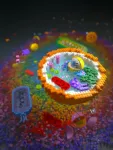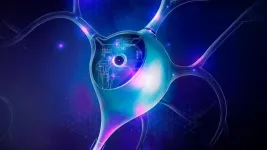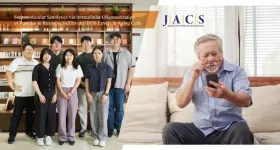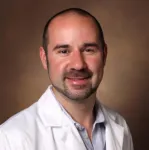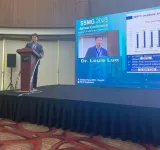(Press-News.org) An international team of researchers has developed a new theoretical framework that bridges physics and biology to provide a unified approach for understanding how complexity and evolution emerge in nature. This new work on "Assembly Theory," published today in Nature, represents a major advance in our fundamental comprehension of biological evolution and how it is governed by the physical laws of the universe.
This research builds on the team's previous work developing Assembly Theory as an empirically validated approach to life detection, with implications for the search for alien life and efforts to evolve new life forms in the laboratory. In prior work, the team assigned a complexity score to molecules called the molecular assembly index, based on the minimal number of bond-forming steps required to build a molecule. They showed how this index is experimentally measurable and how high values correlate with life-derived molecules.
The new study introduces mathematical formalism around a physical quantity called "Assembly" that captures how much selection is required to produce a given set of complex objects, based on their abundance and assembly indices.
"Assembly Theory provides a completely new lens for looking at physics, chemistry and biology as different perspectives of the same underlying reality," explained lead author professor Sara Walker, a theoretical physicist and origin of life researcher from Arizona State University. "With this theory, we can start to close the gap between reductionist physics and Darwinian evolution – it's a major step toward a fundamental theory unifying inert and living matter."
The researchers demonstrated how Assembly Theory can be applied to quantify selection and evolution in systems ranging from simple molecules to complex polymers and cellular structures. It explains both the discovery of new objects and the selection of existing ones, allowing open-ended increases in complexity characteristic of life and technology.
"Assembly Theory provides an entirely new way to look at the matter that makes up our world, as defined not just by immutable particles but by the memory needed to build objects through selection over time," said professor Lee Cronin, a chemist from the University of Glasgow and co-lead author. "With further work, this approach has the potential to transform fields from cosmology to computer science. It represents a new frontier at the intersection of physics, chemistry, biology and information theory."
The researchers aim to further refine Assembly Theory and explore its applications for characterizing known and unknown life, and testing hypotheses about how life emerges from non-living matter. “A key feature of the theory is that it is experimentally testable,” said Cronin. “This opens up the exciting possibility of using Assembly Theory to design new experiments that could solve the origin of life by creating living systems from scratch in the laboratory.”
The theory opens up many new questions and research directions at the boundary of the physical and life sciences. Overall, Assembly Theory promises to provide profound new insights into the physics underlying biological complexity and evolutionary innovation.
END
New "Assembly Theory" unifies physics and biology to explain evolution and complexity
2023-10-04
ELSE PRESS RELEASES FROM THIS DATE:
Unlocking the secrets of neuronal function: a universal workflow
2023-10-04
Biophysically detailed neuronal models provide a unique window into the workings of individual neurons. They enable researchers to manipulate neuronal properties systematically and reversibly, something that is often impossible in real-world experiments. These in silico models have played a pivotal role in advancing our understanding of how neuronal morphology influences excitability and how specific ion currents contribute to cell function. Additionally, they have been instrumental in building neuronal circuits to simulate and study brain activity, offering ...
Munich neuroscientist receives around 1.5 million euros for research into ALS and FTD
2023-10-04
Dr. Qihui Zhou, a neuroscientist at DZNE’s Munich site, has been awarded a “Starting Grant” from the European Research Council (ERC) worth about 1.5 million euros to investigate disease mechanisms of amyotrophic lateral sclerosis (ALS) and frontotemporal dementia (FTD). With her studies, which will focus on the role of immune cells in the disease process and on the most common genetic forms of ALS and FTD, Zhou aims to pave the way for better treatments.
ALS and FTD are devastating diseases characterized by loss of brain cells for which there ...
INSEAD launches world’s largest XR immersive learning library for management education and research
2023-10-04
First business school to launch comprehensive library of VR Learning Experiences to make management education more impactful and to advance management research
VR Learning Experiences already used by 40+ professors and 13K+ learners at INSEAD and now available globally via the INSEAD XR Portal
Professor Ithai Stern, Academic Director of the INSEAD Immersive Learning Initiative, wins 2023 Strategic Management Society Educational Impact Award for his contribution to quality and innovation of strategic management teaching
Fontainebleau ...
Largest dataset of thousands of proteins marks landmark step for research into human health
2023-10-04
Today, [Wednesday 4 October] the scientific journal Nature1 published the results of the world’s largest and most comprehensive study on the effects of common genetic variation on proteins circulating in the blood and how these associations can contribute to disease. This unprecedented population-scale investigation of proteins, powered by turning biological samples into data from UK Biobank, will help scientists better understand how and why diseases develop, which could help drive the development of new diagnostics and treatments for a wide range of health conditions.
To develop this unique and unparalleled dataset, researchers measured the abundance of nearly ...
Selective removal of aging cells opens new possibilities for treating age-related diseases
2023-10-04
A research team, led by Professor Ja Hyoung Ryu from the Department of Chemistry at UNIST, in collaboration with Professor Hyewon Chung from Konkuk University, has achieved a significant breakthrough in the treatment of age-related diseases. Their cutting-edge technology offers a promising new approach by selectively removing aging cells, without harming normal healthy cells. This groundbreaking development is poised to redefine the future of healthcare and usher in a new era of targeted therapeutic interventions.
Aging cells, known as senescent cells, contribute to various inflammatory conditions and age-related ailments as humans age. To address this issue, the research team focused on ...
CHOP researchers find barriers to driver training and licensure, especially among low-income teens
2023-10-04
Philadelphia, October 2, 2023 – Researchers from the Center for Injury Research and Prevention (CIRP) at Children’s Hospital of Philadelphia (CHOP) and the Stuart Weitzman School of Design at the University of Pennsylvania have found that teenagers living in lower-income areas of the Columbus, Ohio metro area are up to four times less likely to complete driver training and obtain their driver’s license before age 18. Long travel times to driving schools also impacted enrollment in driver education, affecting those from both higher- and lower-income areas.
The findings, originally published in the journals Accident Analysis and Prevention ...
Vulnerability found in immunotherapy-resistant triple-negative breast cancer
2023-10-04
Researchers at Vanderbilt-Ingram Cancer Center have discovered a druggable target on natural killer cells that could potentially trigger a therapeutic response in patients with immunotherapy-resistant, triple-negative breast cancer.
Currently, only about 15% of early-stage, triple-negative breast cancer patients benefit from combining immunotherapy, drugs that target immune cells to attack the tumor, with chemotherapy. Identifying why most patients don’t respond is critical for personalizing treatment plans and minimizing therapy ...
Discovery of massive undersea water reservoir could explain New Zealand’s mysterious slow earthquakes
2023-10-04
Researchers have discovered a sea’s worth of water locked within the sediment and rock of a lost volcanic plateau that’s now deep in the Earth’s crust. Revealed by a 3D seismic image, the water lies two miles under the ocean floor off the coast of New Zealand, where it may be dampening a major earthquake fault that faces the country’s North Island.
The fault is known for producing slow-motion earthquakes, called slow slip events. These can release pent-up tectonic pressure harmlessly over days and weeks. Scientists want to know why they happen more often at some ...
Should fathers be screened for postpartum depression?
2023-10-04
Dads can suffer from postpartum depression, and a new pilot study at the University of Illinois Chicago suggests they can and should be screened for the condition. Given the intertwined effects of mothers’ and fathers’ physical and mental health, addressing the health of fathers may be a powerful untapped tool in improving the nation’s ongoing maternal health crisis.
The researchers got mothers’ permission to interview and screen 24 dads, 30% of whom screened positive for postpartum depression on the same tool ...
BGI Genomics breaks new ground in Saudi Arabian precision medicine
2023-10-04
The Saudi Society of Medical Genetics Annual Conference 2023 was held in Riyadh, Saudi Arabia, on September 29-30, 2023. As the most authoritative academic conference on precision medicine in the Kingdom, this conference attracted global experts worldwide.
One of the highlights of the conference was the presentation entitled "Spatial-temporal sequencing and some large-scale application of precision medicine technologies," delivered by Dr. Louis (Renyuan) Luo, VP of BGI Genomics West Asia, at the invitation of the Saudi Society of Medical Genetics.
Dr. Luo's presentation discussed the importance of spatiotemporal sequencing technology ...
